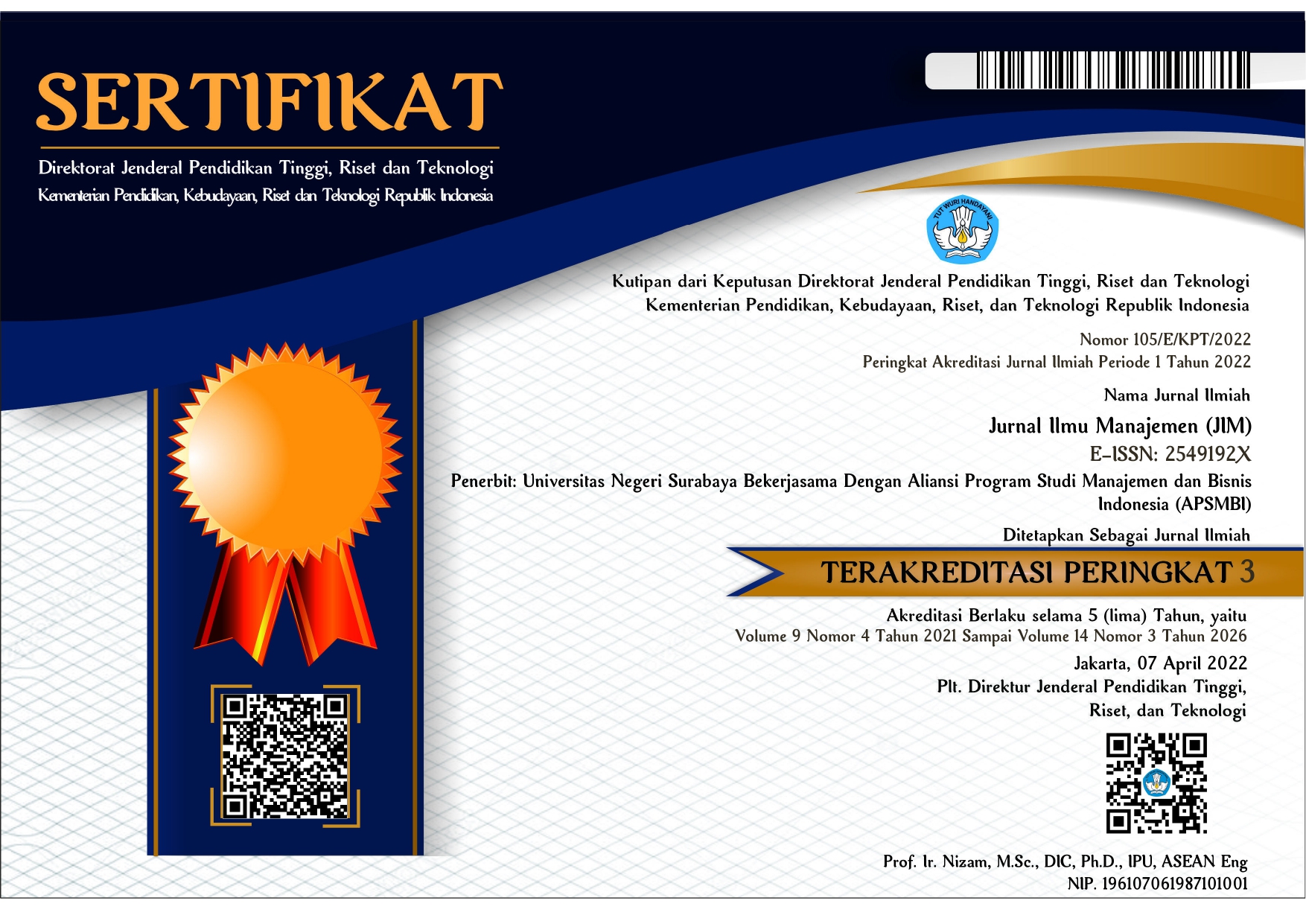Analisis Gap pada Service Quality dengan Menggunakan Analytical Network Process pada Hotel JW Marriott Surabaya
DOI:
https://doi.org/10.26740/jim.v10n2.p737-746Keywords:
analisis gap, analytical network process, service qualityAbstract
This paper discusses the gap analysis of service quality dimensions with the Analytical Network Process (ANP) to explain how the management of the JW Marriott Surabaya Hotel in providing services to customers. The evaluation process is carried out by providing a questionnaire of customer perceptions and expectations with a Likert scale and then using ANP to determine the priority of evaluating service quality dimensions that can be used to find service quality gaps. The results show that 1) the largest gap occurs in the Price dimension, the second largest gap is the competency dimension, and the third largest gap is the responsiveness dimension, 2) the results of the evaluation priority level weighting indicate that the access and approachability dimensions have priority for improvement and evaluation, the second priority is the dimension of flexibility, and the third priority is the dimension of politeness. There are gaps in suitability, and gaps in market research, that have led some customers to leave negative reviews on the Booking.com site. Thus, it is necessary for the management of the JW Marriott Hotel to improve the quality of services provided so that hotel customers give a positive assessment and can even increase the number of customers of the JW Marriott Hotel Surabaya. In this case, even though the customer rating is good, the hotel management must always be willing and able to improve the quality of services provided because service quality is the most important thing in the hotel business.
References
Bank Indonesia. 2016. Kajian Ekonomi dan Keuangan Regional Provinsi Jawa Timur. (Online)(http://www.bi.go.id/id/publikasi/kajian-ekonomiregional/jatim/Contents/ Kajian%20Ekonomi%20Keuangan%20Regional%20Jawa%20Timur%20Agustus%202 016.pdf, diakses 31 Mei 2017)
Fatihudin, D., & Firmansyah, A. (2019). Pemasaran Jasa: (Strategi, Mengukur Kepuasan Dan Loyalitas Pelanggan). Yogyakarta: Deepublish.
Fitzsimmons, J. A., & Fitzsimmons, M. J. (2014). Service Mangement: Operations, Strategy, Information, Technology. Eighth Edition. New York: Mc Graw Hill Education.
Haksever, Cengiz, & Render, B. (2013). Service Management: An Integrated Approach to Supply Chain Management and Operation. New Jersey: Pearson Education, Inc.
Kementrian Perdagangan Republik Indonesia. 2017. Peningkatan Peran Sektor Jasa dalam Perekonomian, (Online), (http://isd-indonesia.org/wp-content/uploads/2017/03/ISD- Services-Week-2017-Herliza.pdf, diakses 31 Mei 2017)
Sugiyono. (2009). Metode Penelitian Bisnis (Pendekatan Kuantitatif, Kualitatif, dan R&D). Bandung: Alfabeta.
Sugiyono. (2017). Metode Penelitian Kebijakan: Pendekatan Kuantitatif, Kualitatif, Kombinasi, R&D dan Penelitian Evaluasi. Bandung: Alfabeta.
Vagias, W. M. (2006). Likert-type scale response anchors. Clemson International Institute for Tourism & Research Development, Department of Parks, Recreation and Tourism Management.
Downloads
Published
How to Cite
Issue
Section
License

This work is licensed under a Creative Commons Attribution-NonCommercial 4.0 International License.
 Abstract views: 811
,
Abstract views: 811
, PDF Downloads: 1830
PDF Downloads: 1830










